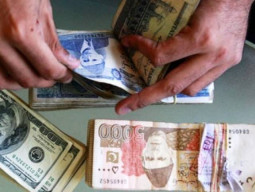
One of the core and central properties of markets is that they lead to increasing concentration of wealth at the top. This is because market allocations of goods and services respond to money, automatically conferring great power to those with wealth. For instance, market incentives lead to the production of luxury handbags and briefcases for plutocrats priced at $40,000+. According to the World Health Organisation (WHO), the price of one such bag can save more than 300 lives.
The extremely ugly realities of market societies are hidden from view because markets generate myths to glorify achievements, project illusions and conceal defects. Indeed, the creation of market myths is a second core and central property of markets, which is not mentioned in any current economics textbook. Market myths are crucial to the survival of market societies since knowledge of realities would lead to a revolution of the bottom 99% who are exploited by the super-rich. In this essay, we analyse a few of the central myths of market societies, and contrast them with the realities.
The myth of opportunity for all is essential to allow extreme inequality to persist. Every man must be made to dream that he too may become one of the powerful elite. The rags-to-riches novels of Horatio Alger became extremely popular in the “Gilded Age” of the early 20th century USA because they created such dreams. The poor boy makes good continues to be a staple of modern movies and fiction, but remains remote from the realities. Projection of a few exceptional cases like Obama conceals the harsh statistics of rampant racism revealed by the “Black Lives Matter” movement. Studies from many different fields document the long-term persistence of extreme poverty in neighbourhoods characterised by dilapidated housing, low quality education, lack of access to healthcare, no job opportunities and high crime. Recent studies (for instance, by Brookings Institute in 2013) document the dramatic contrast between the highly optimistic beliefs of Americans in upward mobility, and statistics showing the permanence of income inequality, and sharply reduced social mobility.
The myth that wealth is acquired by merit is essential to providing a moral justification for extreme inequality. In fact, strong correlation between wealth of parents and children shows that most wealth is inherited. This is strongly contested by market mythologists, and there exist a lot of conflicting and confusing statistics on this issue, since it has serious political implications. Ever since the Reagan-Thatcher era, tax cuts for the rich have been part of economic policy on the grounds that the rich are efficient creators of wealth. Furthermore, the trickle-down myth is widely propagated by economic theories which treat the whole economy as one aggregated person, and hence argue that what is good for the rich is good for everyone. The prominent projection of these myths and illusions drowns out the small but significant trickle of research establishing the opposite realities: Tax cuts and debt relief for the bottom 99% of producers and consumers would increase aggregate demand and speedily end the global recession, which is primarily due to excessive accumulation of wealth by the financiers among the top 1%.
One of the most effective and efficient producers of market myths is conventional economic theory. It is cloaked in highly sophisticated mathematics, which makes it impenetrable to the public, and lends it an aura of respectability. The Marxist claim that capitalists exploit labourers, which is obvious to anyone who studies the dramatically widening gap between the salaries of top management and the average worker, threatens the pretense of equal treatment for all. The mathematics of marginal productivity, a centrepiece of modern economics, was invented to counter Marx. Based on extremely unrealistic oversimplifications, it argues that capital and labour are on an equal footing, and both earn rewards in proportion to their productivity. This market myth continues to be taught to economics students all over the world, even though there is now an overwhelming amount of empirical evidence to disprove it. The widening gap between labour productivity and compensation to labour over the past few decades has been documented by many researchers. While statistics can be disputed, economists have no explanation for how the “productivity” of managers who had bankrupted financial companies justifies the million dollar bonuses they received out of emergency funds to combat the global financial crisis created by their actions.
This system of exploitation of people and planetary resources for private benefits accruing to a few is crucially dependent on myths which replace truth. This is precisely why Truth, which entails seeing through these myths, has the power to set us free.
Published in The Express Tribune, October 9th, 2016.
Like Opinion & Editorial on Facebook, follow @ETOpEd on Twitter to receive all updates on all our daily pieces.













































COMMENTS (2)
Comments are moderated and generally will be posted if they are on-topic and not abusive.
For more information, please see our Comments FAQ